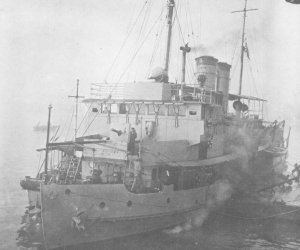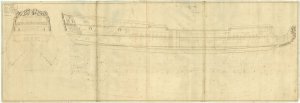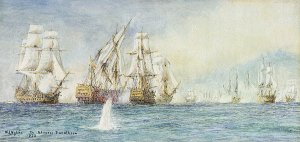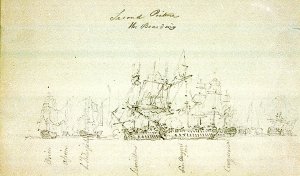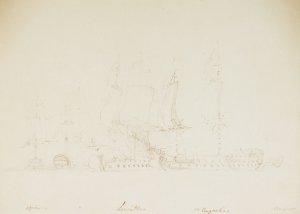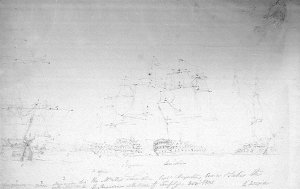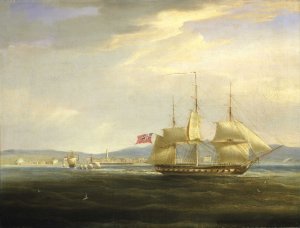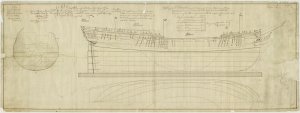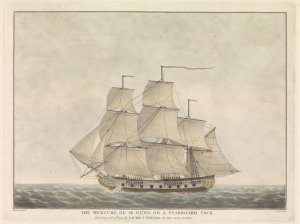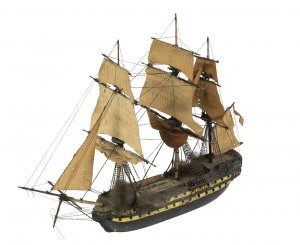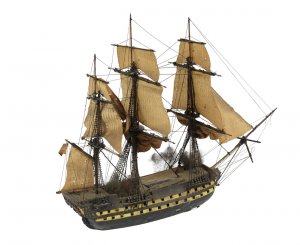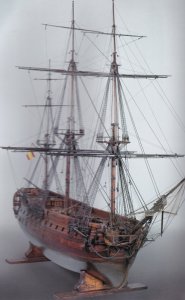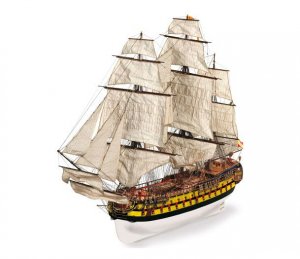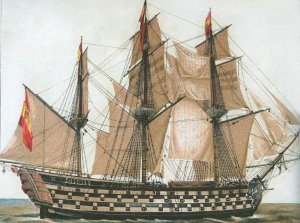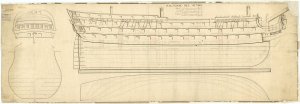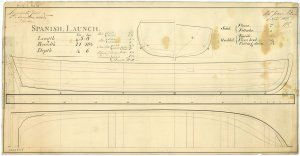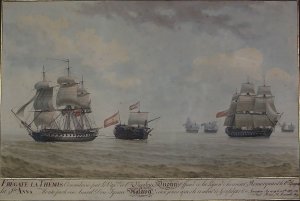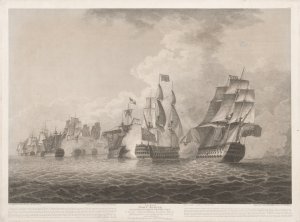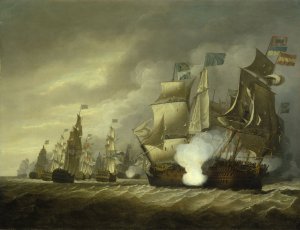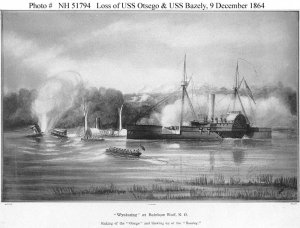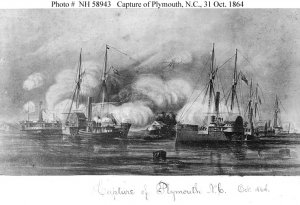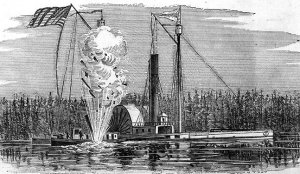Today in Naval History - Naval / Maritime Events in History
8 December 1693 - HMS St. Albans (1687 - 50) wrecked off Kinsale.
HMS St Albans was a 50-gun fourth rate ship of the line of the English Royal Navy, launched at Deptford Dockyard in 1687. The ship fought in the Battle of Placentia (1692).
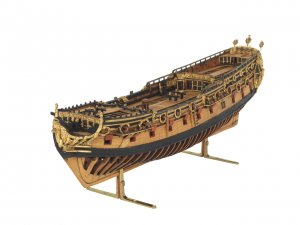
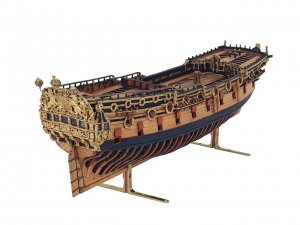
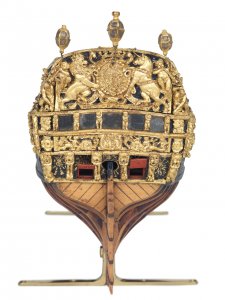

Scale 1:48. A part contemporary full hull model of the St Albans (circa 1687), a 50-gun two-decker fourth-rate ship, built plank on frame in the Navy Board style. The model is decked, equipped and is mounted on two brass hull supports fixed to the keel. The ‘St Albans’ was built at Deptford and launched in 1687. Measuring 128 feet along the gun deck and a beam of 33 feet, it had a tonnage of 615 burden. It took part in the Battle of Bantry Bay in 1689, and on 18 July 1690 under the command of Richard Fitzpatrick, it captured the French 36-gun ship ‘Friponne’. Under the command of Thomas Gillam, it was present at the Battle of Barfleur in May 1692, and was later wrecked on 8 December 1693 near Kinsale, with a large loss of life, including Gillam who drowned. There is some doubt as to how much of the original model survives although most of the carved decoration and frames are thought to be original.
The ‘St Albans’ was built at Deptford and launched in 1687. Measuring 128 feet along the gun deck and a beam of 33 feet, it had a tonnage of 615 burden. It took part in the Battle of Bantry Bay in 1689, and on 18 July 1690 under the command of Richard Fitzpatrick, it captured the French 36-gun ship ‘Friponne’. Under the command of Thomas Gillam, it was present at the Battle of Barfleur in May 1692, and was later wrecked on 8 December 1693 near Kinsale, with a large loss of life, including Gillam who drowned
Class and type: 50-gun fourth rate ship of the line
Tons burthen: 615 long tons (624.9 t)
Length: 128 ft 4 in (39.1 m) (gundeck)
Beam: 32 ft 10.5 in (10.0 m)
Depth of hold: 13 ft 3 in (4.0 m)
Sail plan: Full rigged ship
Armament: 50 guns of various weights of shot
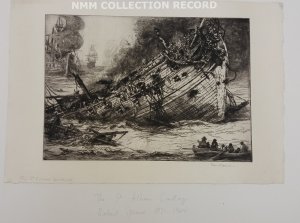
Etching of the sinking of the 'St Albans'. The ship is depicted in the centre of the etching, from the sartboard bow, the aft having sunk below the water. The masts are broken off below and one of them is floating in the foreground. In the right foreground is a boat with some survivors. The 'St Albans' was a 50-gun fourth rate, launched at Deptford in 1687 and fought at the Battle of Placentia in 1692. She was wrecked at Kinsale Harbour in 1693, which is the scene depicted in this etching. Smoke can be seen emanating from the sinking ship and frames bow of the sinking ship, concentrating the viewer's eye on the action taking place on deck, as men clamber to escape, and cling to floating debris. The artist Robert Spence (1871-1963) was a renowned artists and model maker, and as such, has captured the hull-shape and arrangement of the vessel accurately. There are wreathed gunports on the upper deck and a lion figurehead at the bow. However, the addition of a bobstay to the stem of the St Albans is likely to be erroneous. The earliest depiction of a bobstay, thought to be a French invention, can be found on a French model of the 'Royal Louis' (1692). The bobstay was introduced into England in around 1700, and can be found on a model of the 'St George' dated to 1701. In the background to the left, two more fully rigged ships of the period are depicted. Spence was undoubtedly familiar with the work of the van der Veldes, and to some extent this etching echoes the type of scene the two Dutch artists depicted, although by no means does it achieve the same quality.
https://en.wikipedia.org/wiki/HMS_St_Albans_(1687)
8 December 1693 - HMS St. Albans (1687 - 50) wrecked off Kinsale.
HMS St Albans was a 50-gun fourth rate ship of the line of the English Royal Navy, launched at Deptford Dockyard in 1687. The ship fought in the Battle of Placentia (1692).




Scale 1:48. A part contemporary full hull model of the St Albans (circa 1687), a 50-gun two-decker fourth-rate ship, built plank on frame in the Navy Board style. The model is decked, equipped and is mounted on two brass hull supports fixed to the keel. The ‘St Albans’ was built at Deptford and launched in 1687. Measuring 128 feet along the gun deck and a beam of 33 feet, it had a tonnage of 615 burden. It took part in the Battle of Bantry Bay in 1689, and on 18 July 1690 under the command of Richard Fitzpatrick, it captured the French 36-gun ship ‘Friponne’. Under the command of Thomas Gillam, it was present at the Battle of Barfleur in May 1692, and was later wrecked on 8 December 1693 near Kinsale, with a large loss of life, including Gillam who drowned. There is some doubt as to how much of the original model survives although most of the carved decoration and frames are thought to be original.
The ‘St Albans’ was built at Deptford and launched in 1687. Measuring 128 feet along the gun deck and a beam of 33 feet, it had a tonnage of 615 burden. It took part in the Battle of Bantry Bay in 1689, and on 18 July 1690 under the command of Richard Fitzpatrick, it captured the French 36-gun ship ‘Friponne’. Under the command of Thomas Gillam, it was present at the Battle of Barfleur in May 1692, and was later wrecked on 8 December 1693 near Kinsale, with a large loss of life, including Gillam who drowned
Class and type: 50-gun fourth rate ship of the line
Tons burthen: 615 long tons (624.9 t)
Length: 128 ft 4 in (39.1 m) (gundeck)
Beam: 32 ft 10.5 in (10.0 m)
Depth of hold: 13 ft 3 in (4.0 m)
Sail plan: Full rigged ship
Armament: 50 guns of various weights of shot

Etching of the sinking of the 'St Albans'. The ship is depicted in the centre of the etching, from the sartboard bow, the aft having sunk below the water. The masts are broken off below and one of them is floating in the foreground. In the right foreground is a boat with some survivors. The 'St Albans' was a 50-gun fourth rate, launched at Deptford in 1687 and fought at the Battle of Placentia in 1692. She was wrecked at Kinsale Harbour in 1693, which is the scene depicted in this etching. Smoke can be seen emanating from the sinking ship and frames bow of the sinking ship, concentrating the viewer's eye on the action taking place on deck, as men clamber to escape, and cling to floating debris. The artist Robert Spence (1871-1963) was a renowned artists and model maker, and as such, has captured the hull-shape and arrangement of the vessel accurately. There are wreathed gunports on the upper deck and a lion figurehead at the bow. However, the addition of a bobstay to the stem of the St Albans is likely to be erroneous. The earliest depiction of a bobstay, thought to be a French invention, can be found on a French model of the 'Royal Louis' (1692). The bobstay was introduced into England in around 1700, and can be found on a model of the 'St George' dated to 1701. In the background to the left, two more fully rigged ships of the period are depicted. Spence was undoubtedly familiar with the work of the van der Veldes, and to some extent this etching echoes the type of scene the two Dutch artists depicted, although by no means does it achieve the same quality.
https://en.wikipedia.org/wiki/HMS_St_Albans_(1687)



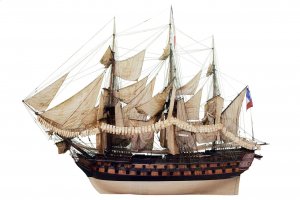
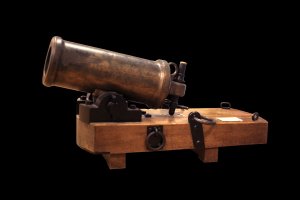
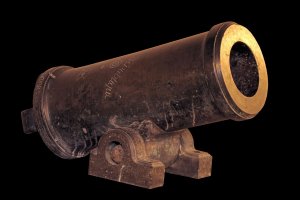
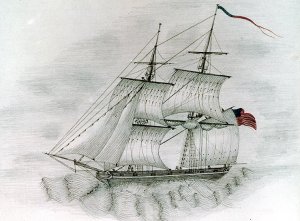
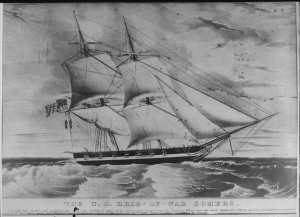
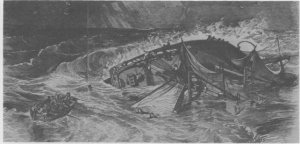
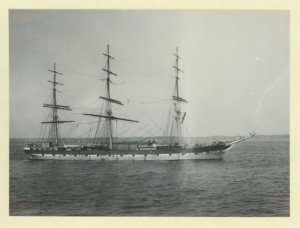

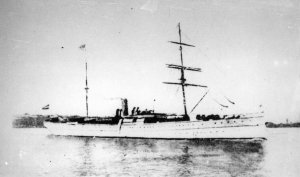
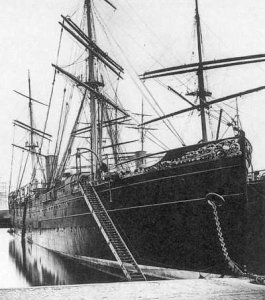
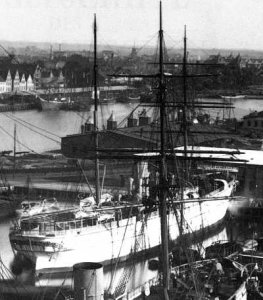
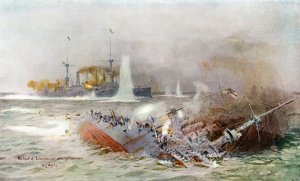
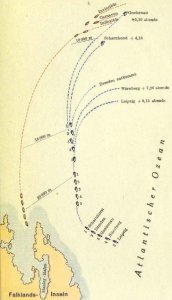
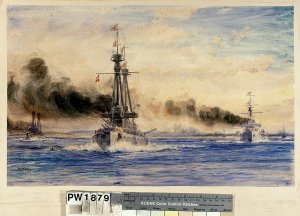
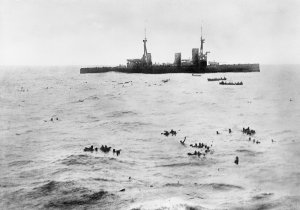

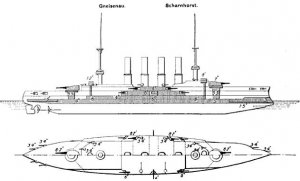
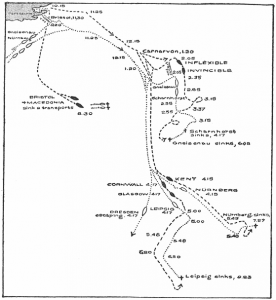
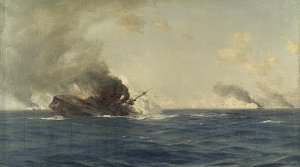
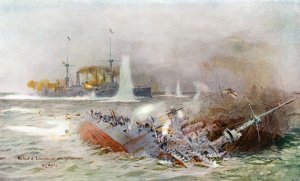
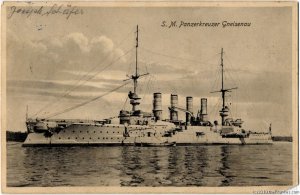
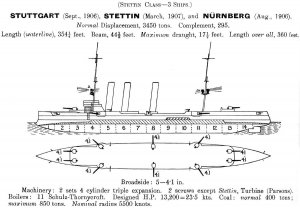
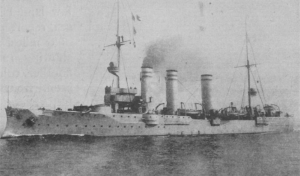
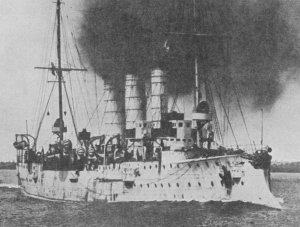
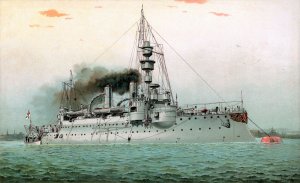
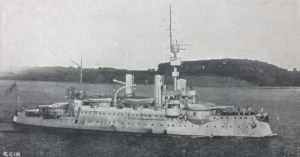
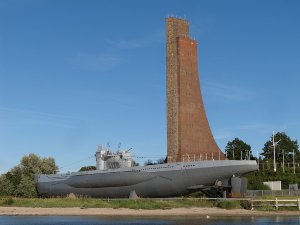
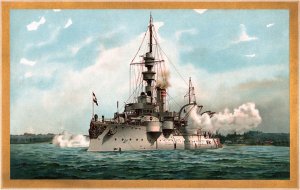
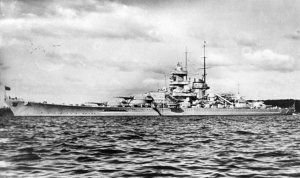
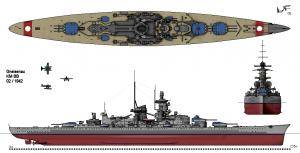
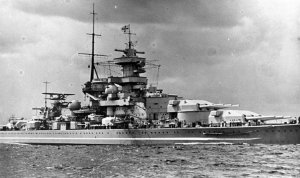
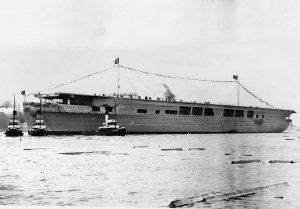
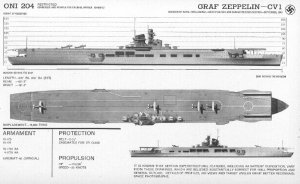
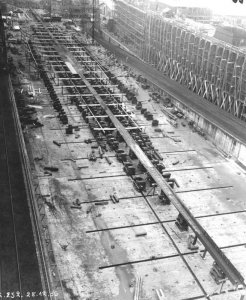
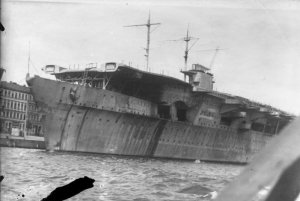

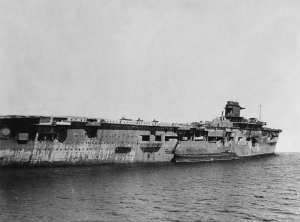
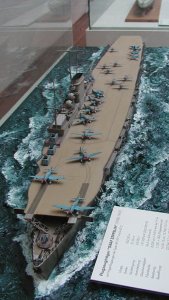
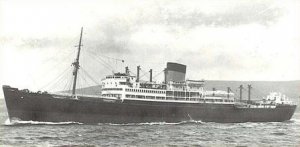
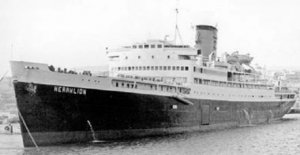
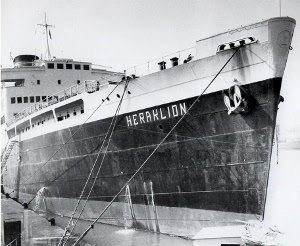
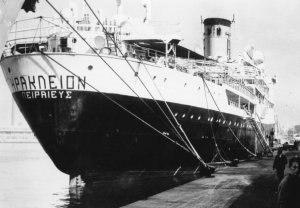

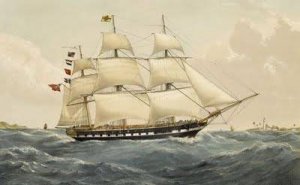
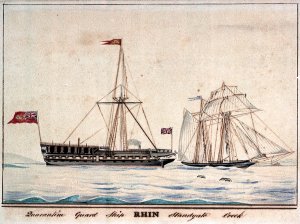
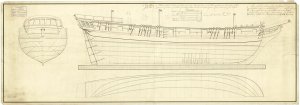
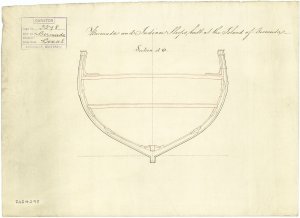
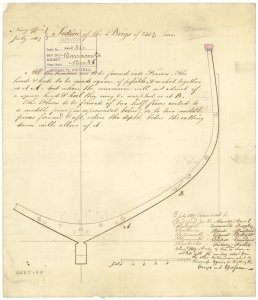
 Shipbuilding and Drydock Company
Shipbuilding and Drydock Company